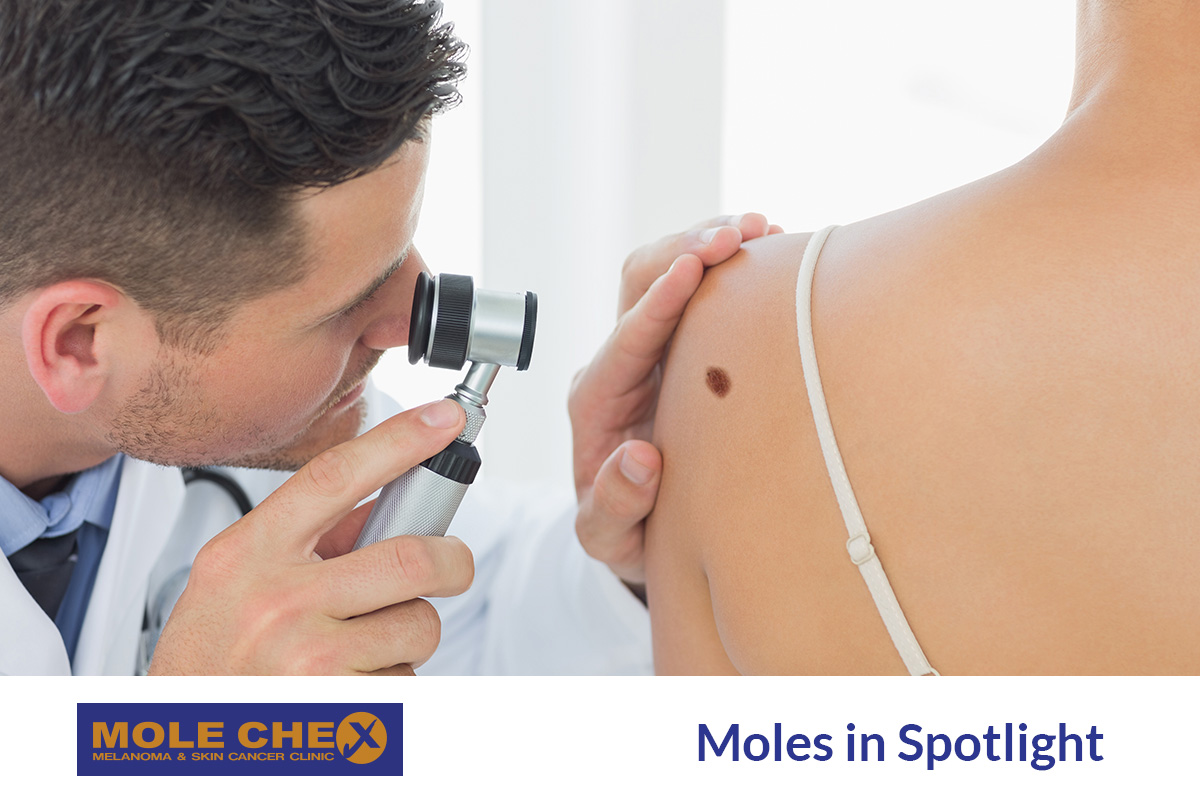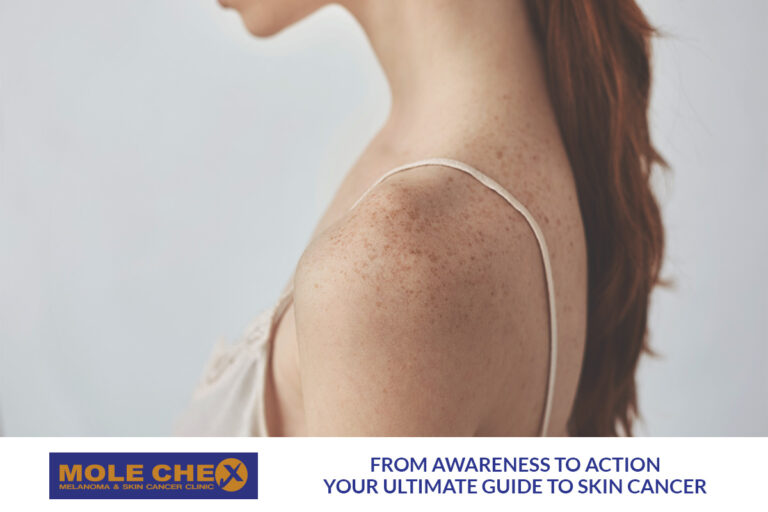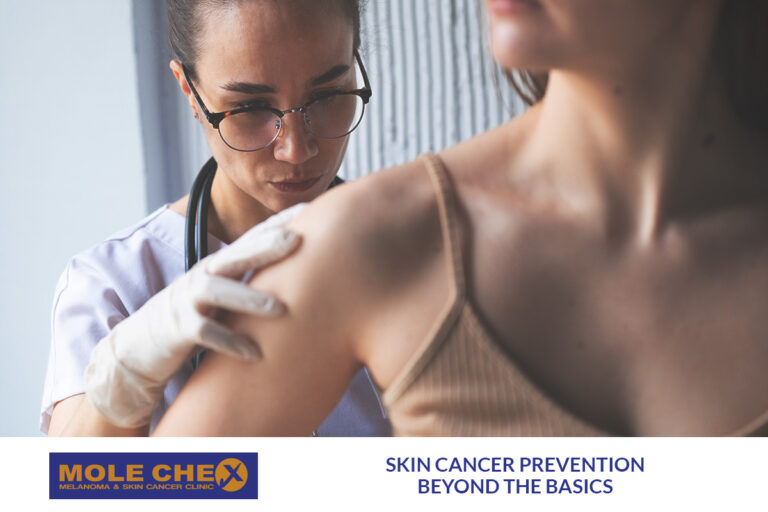Moles in Spotlight : What’s Normal and What’s Not

Moles are a common presence on our skin, varying in size, color, and shape. While most moles are harmless, it’s essential to be vigilant about any changes in their appearance. In this comprehensive blog post, we’ll shed light on moles, discuss the differences between moles and other skin spots, explore how skin cancer differs from skin diseases, guide you on when to have a skin check, provide a quick skin check list, and address frequently asked questions. Your skin’s health matters, and understanding the signs is the first step toward early detection and prevention.
What is a Mole?
Moles are clusters of pigmented cells that appear as dark spots on the skin’s surface. Moles can evolve over time, from appearing during childhood to changing in size and color as you age.
In medicalterms, also known as a nevus, is a common and typically benign skin growth composed of clusters of pigmented cells called melanocytes. Melanocytes produce melanin, the pigment responsible for the color of your skin, hair, and eyes. Moles can vary in size, color, shape, and texture. They can be flat or raised and may range from flesh-colored to dark brown or black. While most moles are harmless, some can develop into skin cancer, particularly if they undergo changes over time.
Types of Moles:
- Common Moles: These moles are usually round or oval with a smooth, even color. They may appear during childhood or adolescence and are often genetic.
Atypical Moles (Dysplastic Nevi): Atypical moles are larger than common moles and have irregular borders and a mixture of colors. They may resemble melanoma, but most atypical moles do not become cancerous.
Moles can evolve over time due to various factors, including sun exposure, hormonal changes, and age. It’s important to monitor any changes in your moles, as certain alterations could indicate a potential issue. Changes to look out for include:
- Changes in size, shape, or color.
- Irregular or jagged borders.
- Itching, bleeding, or oozing.
- Becoming raised or elevated.
How Skin Spots are Different from Moles?
Not all dark spots on the skin are moles. Freckles, age spots, and birthmarks are examples of skin spots that differ from moles in terms of size, color, and texture. Moles tend to be more elevated, and their borders can be irregular.
How Skin Cancer Looks Different from Skin Diseases:
Skin cancer often exhibits certain characteristics that distinguish it from common skin diseases. Skin cancer spots may have irregular shapes, uneven edges, variations in color, and can grow or evolve rapidly. It’s crucial to monitor any changes in your skin and seek medical attention if you notice any unusual developments.
When to Have a Skin Check?
Regular skin checks are essential for early detection. If you notice any of the following signs, it’s time to schedule a professional skin check:
- Changes in the size, color, or shape of a mole.
- A new mole appearing later in life.
- A mole that itches, bleeds, or becomes painful.
- Any spot that stands out from others.
Your Quick Skin Check List
- Examine your skin in a well-lit area.
- Note any changes in mole’s color, size, or shape.
- Monitor new spots or growths.
- Pay attention to any spots that itch, bleed, or hurt.
- Don’t foraget to check less visible areas like your scalp, nails, and feet.
FAQs About Skin Checks & Moles
It’s recommended to have an annual skin check, especially if you have a history of sun exposure or a family history of skin cancer.
Regularly apply sunscreen with SPF 30 or higher, wear protective clothing, and seek shade during peak sun hours
If you notice any suspicious changes in your mole or skin spots, such as growth, bleeding, or asymmetry, consult a dermatologist promptly.
While having many mole does not guarantee skin cancer, it can increase your risk. It’s important to regularly monitor your mole for any changes and consult a dermatologist if you notice anything unusual.
No, skin cancer may not always cause pain or itchiness. Changes in size, shape, color, or elevation are often more significant indicators. Regularly inspect your skin for any abnormalities.
Yes, skin cancer is highly treatable when detected early. Regular skin checks and prompt medical attention can lead to successful treatment and positive outcomes.
While both dermatologists, skin doctors and general practitioners can perform skin checks, skin doctor specialize in skin health and are often better equipped to identify subtle changes and provide expert advice on skin cancer prevention and management.
Conclusion
Understanding the nuances of moles, their differences from skin spots, and the signs of skin cancer is essential for maintaining your skin’s health. By following the quick skin check list, scheduling regular skin checks, and being vigilant about changes, you empower yourself to catch any potential issues early and take proactive measures. Remember, your skin’s well-being is within your control, and early detection can significantly impact positive outcomes.
Interested in learning more ? Read other article :



